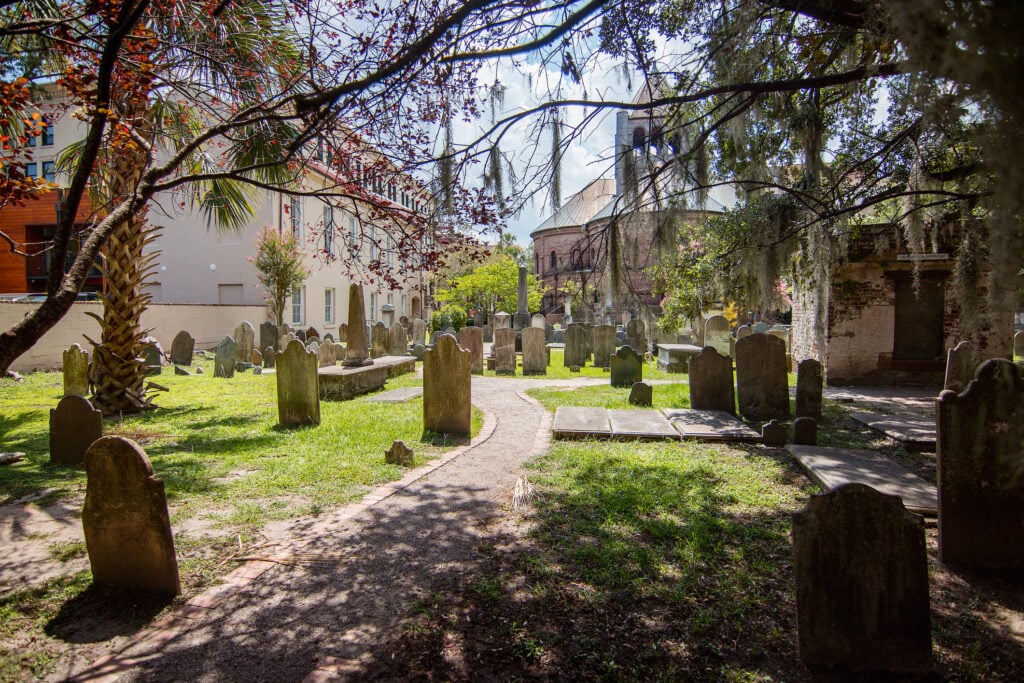The following article is based on the report “The New Orphan: Youth Sabbath School” prepared for the 180° Symposium. This article highlights findings of Steve Case and Eddie Heinrich, describes the status of youth Sabbath School in North America, and offers guidance for the future strengthening of youth Sabbath School. —Editors.
Youth Sabbath School: Important Yet Neglected
The theme for the 2017 Andrews University 180° Symposium was “Sabbath School Matters.” [Click here to read more about the symposium.] Youth Sabbath School serves as the primary venue for youth ministry in a local church. Indeed, it matters. While some adults may see its purpose to provide religious education for the youth, anecdotal responses typically indicate that young people attend primarily to see their friends — a social motivation.
With 52 sessions each year, nothing else compares to its frequency. It’s not easy to create and maintain a vibrant youth Sabbath School. It requires commitment, time, money, and follow through. As a result, youth Sabbath School leaders often revert to lectures when youth gather, rather than utilizing discussion or involvement. The leaders tend to burn out or get discouraged by poor attendance and potential criticism from concerned adults who judge from a distance. This makes it easy to quit and hard to recruit a replacement. With little training for leaders, resourcing, or support, youth Sabbath School rarely registers as a “must experience” for young people.
Sabbath School seems to be off the radar — or languishing — for most Adventists in North America. An estimated 25 percent of Adventists in North America attend adult Sabbath School on any given Sabbath.[1] But that might be a generous estimate.[2] Although no one is suggesting Sabbath School should be eliminated, based on the decreasing participation, it doesn’t seem to be a priority. A majority of pastors rarely attend Sabbath School; many parents don’t seem to attend either.
Pastors Give Their Indirect Input
The North American Division (NAD) Youth Ministries Department sponsored “Mission Lifeguard” from 2014-2015. This initiative focused on reaching out to missing youth and young adults who no longer participated in Seventh-day Adventist churches.[3] While the primary purpose of the phone calls was to help local churches reach out to missing young people, some data collection was inevitable to create strategies for youth and young adult ministry in local churches.
When searching for youth ministry programming offered at the local church, slightly more than half (52 percent) of the pastors didn’t report anything. This may have been because that wasn’t part of the interaction regarding reaching out to missing young people, or because there was no response from the pastor or congregation after four attempts (phone calls, emails, etc.) to make contact. If the data is limited to the remaining 48 percent (963 of the 2,015 congregations contacted), the most common programs for young people in those churches are indicated on the following table:
Table: Youth Ministry Programs at Local Churches in NAD 2014-2015
| 54 % | Youth Sabbath School |
| 35 % | Nothing |
| 22 % | AY or MV or Vespers |
| 20 % | Youth Socials |
| 20 % | Other |
| 16 % | Teen Pathfinders |
| 13 % | Youth Service Activities |
| 11 % | Small Group Bible Study |
| 9 % | Annual Youth Day at Church |
| 6 % | Youth Evangelism |
Based on this data, a little more than half of the churches who responded have a youth Sabbath School. Less than a quarter have an Adventist Youth (AY) or Sociedad de Jovenes or Vespers gathering. A mere 16 percent reported having a teen Pathfinder Club, and only six percent had something for youth evangelism. While this might not be true in certain congregations, it provides an overview with input from all nine unions within the NAD.
With slightly more than half of these churches having a youth Sabbath School, this is clearly the most common program for youth ministry in the local church. But this gives no indication about the quality of the youth Sabbath School. And only 28 percent have a roster of who attends. Less than one-fourth of the churches have a Sabbath afternoon or Friday evening program specifically related to youth, but they may consider that as their “youth ministry.”
The deep concern that the union youth directors and the NAD Youth Ministries Department have expressed to resuscitate youth Sabbath School lead to distributing a one-page survey about youth Sabbath School to conference and young youth directors at the January 2017 Adventist Ministries Convention in Tucson, Arizona. Fifteen conference or union youth director survey responses were returned.
While Youth Sabbath School may be the most common program for young people in the local church, as evidenced in the survey responses, it’s not common from a conference or union youth director’s time or budget. Youth directors seem fully occupied with summer camp, Pathfinders, and some large-scale conference events that draw young people away from their local church, not toward it. When asked for the number of churches in their conference, 93 percent could give the number. When asked about the number of Youth Sabbath Schools in their conference, only 33 percent could give a number, and that number was less than half of the churches in their conference. No youth director had a roster of Youth Sabbath School leaders. Conference youth directors appeared to not even know who were their local church youth Sabbath School leaders.
Some may be encouraged that 40 percent of these youth directors provide annual training in youth ministry. Some may be discouraged that another 40 percent provide no training. One wonders how local church youth leaders find out about this training when most seem to lack a connection with their conference youth director. One also wonders if local church leaders expect anything from their conference youth director when it comes to youth ministry in their church.
None of the youth directors named Cornerstone Connections, the official curriculum, as a resource for youth Sabbath School. But 33 percent named “Resources” as one of the top needs for youth Sabbath School. There seems to be little indication that youth Sabbath School is currently part of the ministry of conference or union youth directors.
Looking for a Youth Sabbath School Director in a Conference
The North American Division contains nine unions and 59 conferences. In February 2017, 68 websites of each union and conference were checked to see how much of a priority youth Sabbath School would appear based on their websites and the personnel and departments listed.
No indication was found of any person or any department labeled “Youth Sabbath School.” Perhaps the “Sabbath School” department or personnel would include “Youth” as part of its ministry. Or maybe a “Youth Director” or “Youth Department” would include “Youth Sabbath School” as part of its ministry and responsibility.
Of the 68 websites, only 28 percent (19 conferences or unions) listed a department called “Sabbath School” with someone responsible for it. Of those listed, it was customary to use the label “Adult Sabbath School.” With 72 percent of the websites showing no Sabbath School department and no person giving attention to it, either Sabbath School is able to function without conference or union leadership, or Sabbath School ranks lower than many other concerns and services provided. It doesn’t seem that “Sabbath School” from a conference or union perspective includes young people.
On the sites, Youth directors and Youth departments have much more representation than Sabbath School. Eighty-eight percent of the websites listed someone as a “youth director,” but it wasn’t unusual to see additional responsibilities besides youth ministry. Larger conferences sometimes have more than one youth director or a second person listed serving as a “young adult director.”
Based on the website content, it seems youth directors give priority to summer camp and Pathfinders. Some have an occasional youth rally or short-term mission trip, social gathering, or recreational event. Only seven percent even mentioned the term “Youth Sabbath School” somewhere on their webpage. While about one out of every four youth directors has a separate website from their conference for their youth ministry services, those sites aren’t servicing youth Sabbath School.

Resources: People
The most important resource for a youth Sabbath School is the youth and those who lead them. Volunteer youth leaders are believed to serve an average of 18 months.[4] Occasionally, a “lifer” serves as the youth leader for decades. More frequently, the parents of youth serve as the youth Sabbath School leader. And they probably also served as their Sabbath School leader ever since Cradle Roll and simply continued the graduation from one age group to the next. By adolescence, it’s time for the young people to test out their own beliefs with other trusted mentors.
Who will be that youth Sabbath School leader? How many will there be? What kind of training and support will they receive? Currently, each church is on its own. Rarely do you hear statements such as, “Our Youth Sabbath School is really making a difference!” Since there doesn’t seem to be any person, place, or process to bring about change, the majority of Adventists simply vote with their feet and don’t attend youth Sabbath School.[5] Some attend the church service but not Sabbath School.
Resources: Materials
After people, perhaps the second most important resource would be materials for youth Sabbath School programming. Starting in 1983, Cornerstone Connections provided an all-in-one resource for youth leaders that included youth Sabbath School, outreach, small groups, social activities, AY, and leadership elements. Eventually it became just the youth Sabbath School lesson. Insight magazine had continued with a quarterly publication called Insight Youth Resource that contained program ideas for a comprehensive youth ministry, while the youth Sabbath School lesson continued in Cornerstone Connections. But Insight Youth Resource has ceased publication. The only youth ministry resource currently published by the church is Cornerstone Connections, which is limited to the Youth Sabbath School lesson. It is available by making a “standing order” with Pacific Press through the Adventist Book Center, and it takes 4-6 months to activate. It is also available as a free app.
While many others resources, Adventist and non-Adventist, are available online and through Christian bookstores and publishers, few youth Sabbath School leaders are aware of what is available or how to choose. This includes AdventSource, which carries a number of supplemental resources that could be used for youth Sabbath School.
When the NAD surveyed local churches and asked those under the age of 30 about their awareness of what the specific resources the NAD had produced for youth ministry, the report stated: “The majority of Adventists under 30 years of age are simply not aware of the resources and programs that the North American Division is currently providing to support youth ministry. The most widely-known resource is Insight magazine, and only two in five of the young people have any awareness of it. Just one in four actually get a copy of the magazine even occasionally.”[6] Insight magazine has ceased publication as of June 2017 because subscriptions have dropped so low that it’s not financially feasible to continue publishing a resource people may recognize by name but not purchase or use.
A Path Forward
If youth Sabbath School is the main venue for local church youth ministry, then conference, union, and division youth directors should include it as a significant part of their ministry. And conference youth directors are the most important movers to adopt youth Sabbath School as a key part of their job description.
In 1889, Ellen White wrote, “The Sabbath School, when rightly managed, possesses marvelous power, and is adapted to doing a great work, but it is not now what it may and should be. The influence growing out of Sabbath school work should improve and enlarge the church.”[7] She also wrote, “The Sabbath School work is important, and all who are interested in the truth should endeavor to make it prosperous.”[8]
Youth Sabbath School is the hidden gem of youth ministry. It doesn’t have to be an orphan, the victim of pity and neglect. Helping this orphan prosper within the church family will necessitate vision, hope, investment, recruitment, training, planning, follow through, and a clear dependence on God.
Conference youth directors are key in making the adoption of this orphan formal and recognized. Union and division youth directors must make a change as well. Young people themselves should be involved in this process by giving feedback and engaging in both creating and leading Youth Sabbath School. Then we can say that not only “Sabbath School matters,” but the people who are part of it truly matter.
If you are a Sabbath School leader for grades 9-12 invite your youth to join the conversation around Youth Sabbath School at #SDAYouthVoices. The NAD Youth Ministries department would like to hear from you. Send us a message through our FACEBOOK PAGE. And if you would like to join a Youth Sabbath School Pilot Project that provides additional teacher resources through AdventSource, CLICK HERE.
Note: There are no published estimates for youth Sabbath School attendance.




